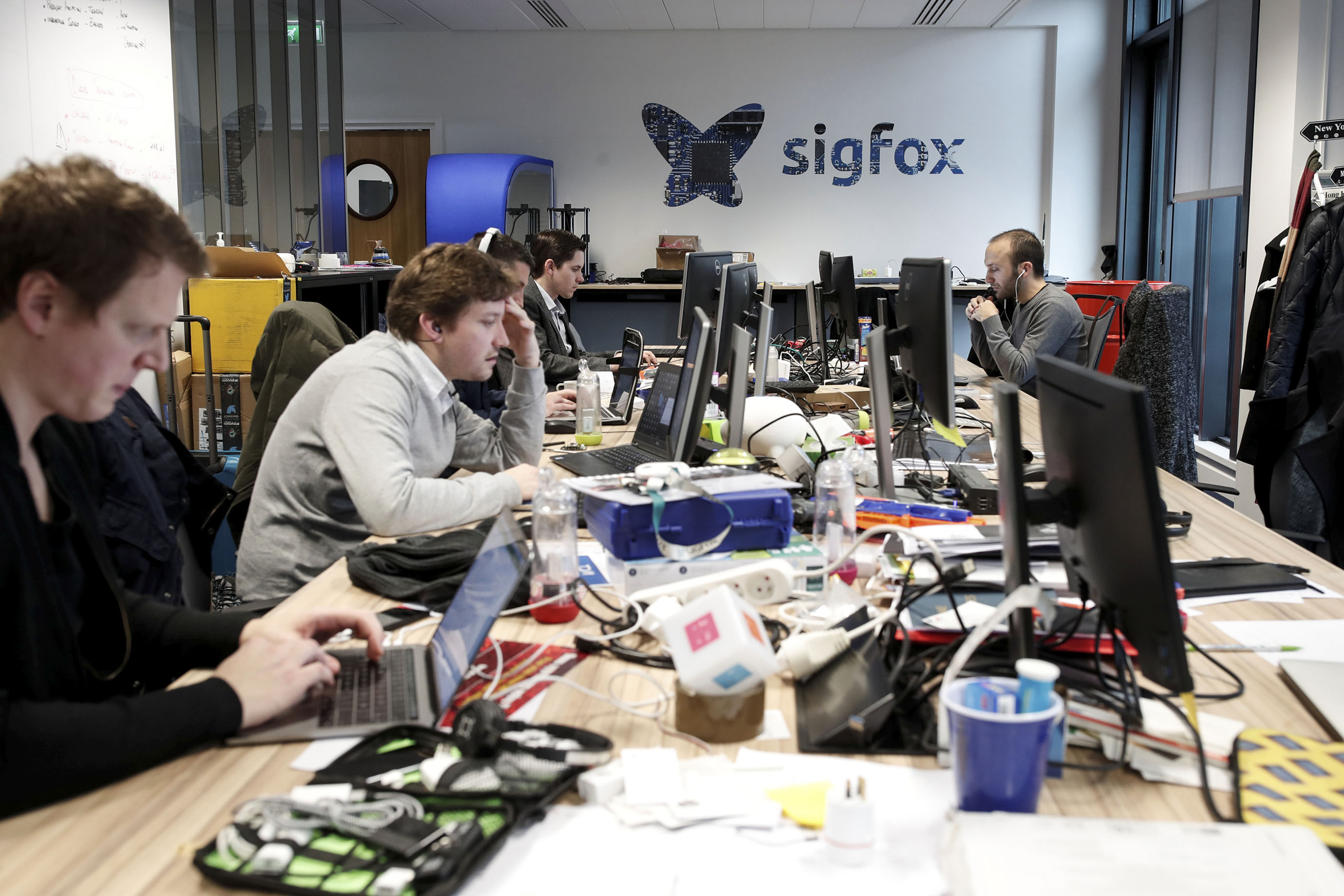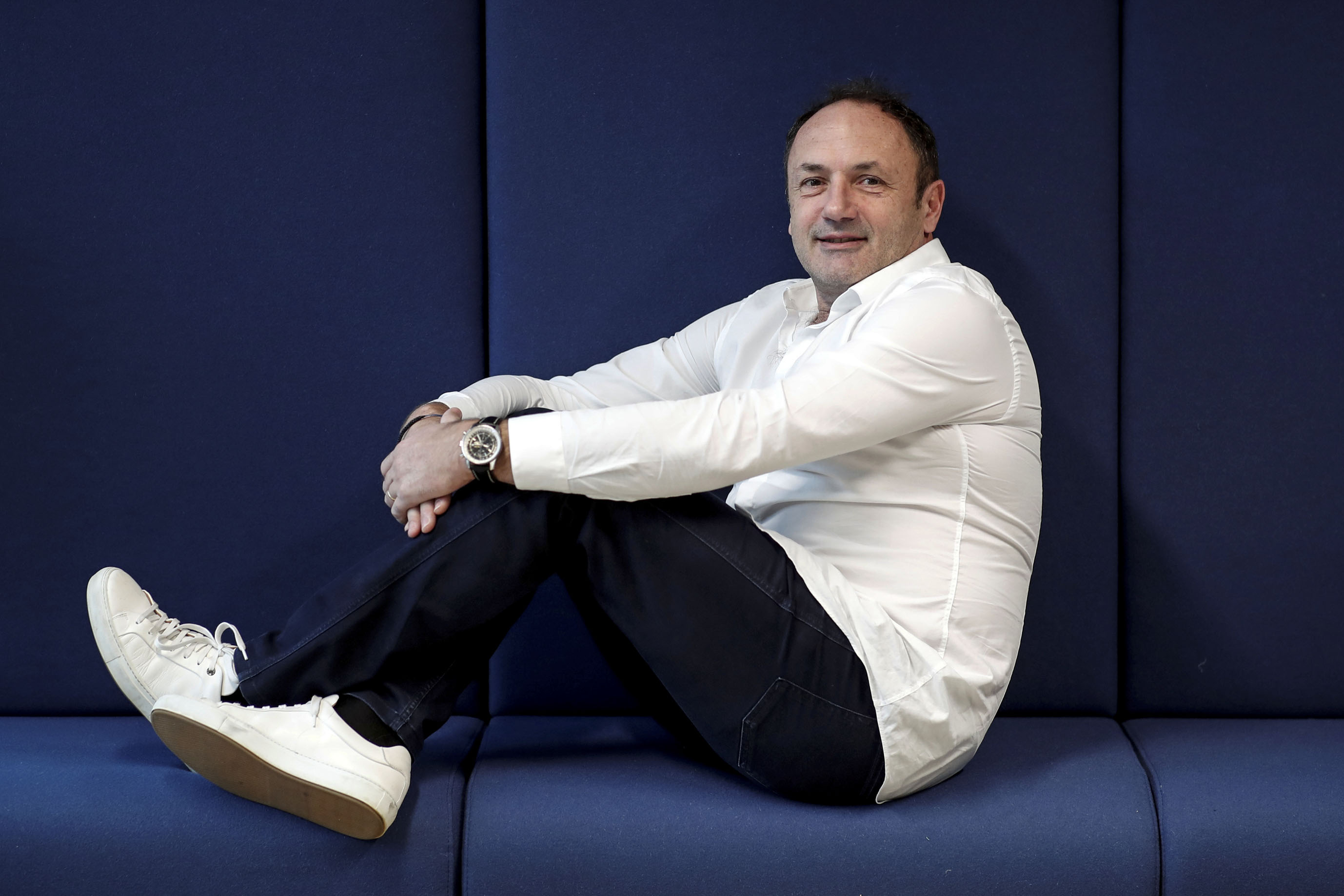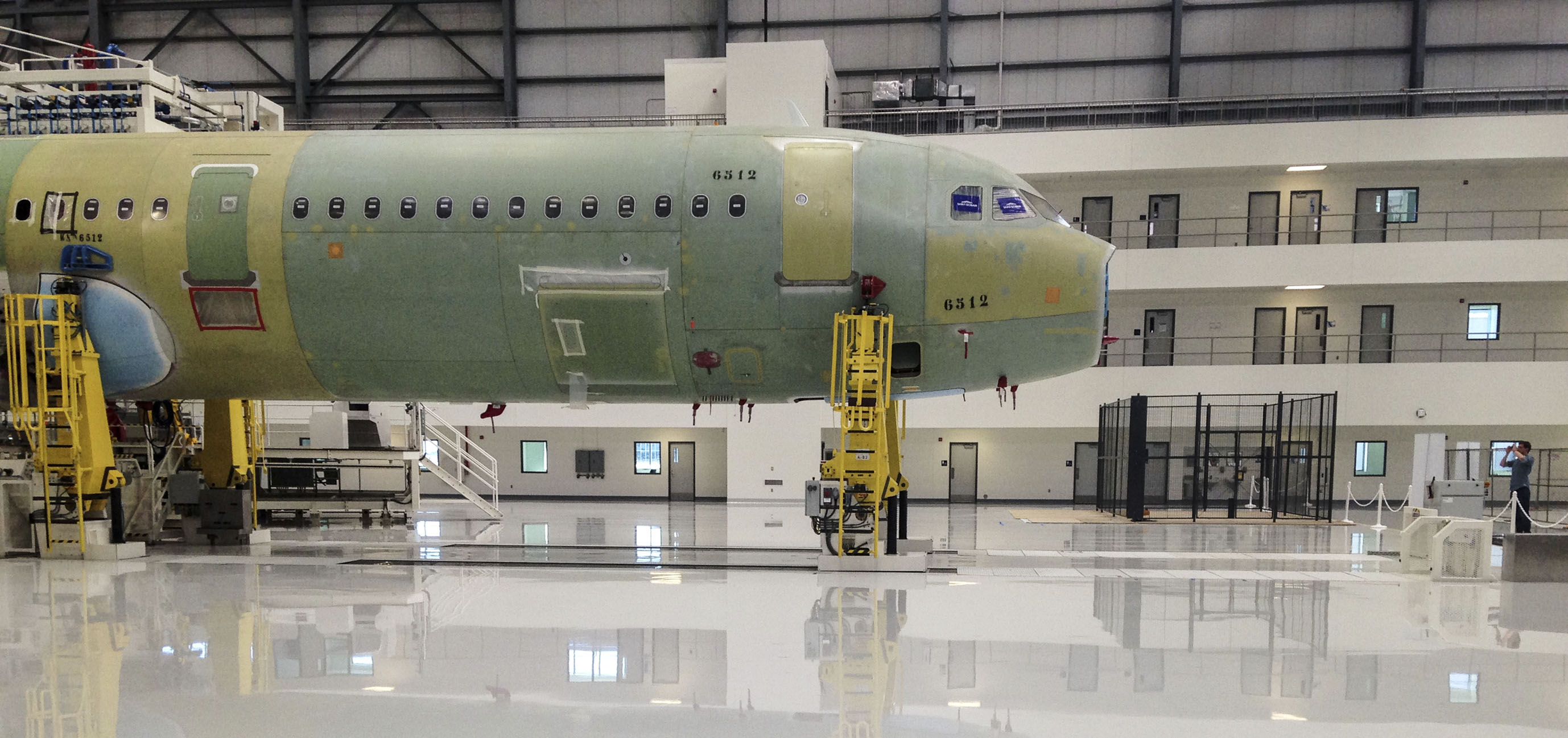Children's comprehension and vocabulary improves when parents read to them.
Forget food, fashion and luxury, France believes it has a new image to sell: innovation.
Last week I joined a small group of South African journalists invited by the French government to showcase its technology, industry and entrepreneurship.
Most of the projects we visited pre-date the presidency of Emmanuel Macron, the country’s 40-year-old leader, who won decisive majorities in both the presidential and parliamentary elections about a year ago, but they tie in with the promised economic reforms that brought him to office.
We visited a multitude of programmes with a whole lexicon of innovation: startups, accelerators, incubators, hubs, clusters, valleys and ecosystems, covering activities as diverse as aerospace, digital, biotech, the internet of things, agriculture and social enterprise.
These range from huge, decades-old businesses, notably aerospace giant Airbus, which has a listed market value of €77-billion, to startups that no longer have to begin life in a garage. Now no more than embryos, they can go straight to uber-cool incubators where they can expect space and a package of support to turn ideas into businesses.
Foreign companies are targeted, with the 71 innovation clusters in the country hosting 800 foreign companies. There is also a strong emphasis on turning the French economy into an international one: even relatively new startups are encouraged to think global.
More than once I heard that the French had given the world the word entrepreneur; now they also want to be seen as entrepreneurs, acknowledging that outsiders see the country to be underworked — the 35-hour working week being a case in point — overtaxed and burdened by bureaucracy.
Station F
Station F in Paris was a disused railway station with an impressive floating concrete roof. Protected by law, the new structures within are not allowed to touch the concrete base structure. Led by Xavier Niel, a French entrepreneurial luminary, the station has been repurposed as a giant startup incubator, billing itself as the largest such facility globally.
Under its roof is a network of 26 incubators, each specialising in a different area, from fashion to agriculture.
The government also has officials on hand at Station F to advise on everything from registering companies to protecting intellectual property. There is a technical facility where equipment can be built. Major companies such as Google and Facebook rent space. There are pause areas to rest, booths for private calls, coffee shops (of course) and, as of a month ago, a giant restaurant area with a choice of vendors offering mouth-watering meals cooked artisan-style to boost any drooping entrepreneurial spirit.
Station F offers 3 000 desks as co-working space where 1 000 startups develop their ideas, hopefully to commercial reality.
The creative energy is palpable. Part of its stated intention, according to Isabelle Morin of Creative Valley, which runs one of its 26 incubation programmes, is to publicise innovation. So no longer will the best early ideas be confined to the garage. Here they can be instantly networked, developed and improved.
Internationalisation is seen as an important part of early business strategy, partly, as Morin explained, that on the internet competitors can copy ideas really fast. So if you have a globalisable idea, best you get to those foreign markets before your idea is stolen by a competitor.
There are master classes once a month at which experts discuss various aspects of innovation. The sense is a kind of university — not one where academic ideas are kicked around but rather how the freshest and newest ideas can be commercialised.
Station F is just a year old, too soon to say how well it is working. But, Morin told us, a key part of its being is to publicise innovation, to take it out of unseen garages and celebrate it in a splendid space. If this is its goal, it is succeeding admirably.
Sigfox
If Station F is an ideas factory, Sigfox, nine years old, is a fully fledged, up-and-running company, which has already rolled out partnerships globally.

[Sigfox is working on a low-cost network like the one that opens garages. (Benoit Tessier/Reuters)]
It is focused on the internet of things (IoT). The idea of millions, perhaps billions, of devices being connected through the internet and changing the business landscape in the process is well understood. Sigfox is the first offering I have come across where I could see just what a profound effect IoT is likely to have.
It’s a question of costs. With potentially billions of connected devices, both the device cost and the transmission cost has to be cheap.
Sigfox has concentrated on developing a low-cost communication platform using the ISM wireless spectrum. This is the same spectrum that you use to open your garage door electronically. The spectrum has low-to-no-regulation costs and infrastructure such as antennae is relatively cheap to set up. Just 2 200 antennae can cover the whole of France.
Unlike platforms on which cellular technology runs, which require constant communication between device and network, IoT devices using the ISM spectrum can be in use for no more than 1% of the time. They wake up, send a tiny message and then go back to sleep again.
The devices are still relatively expensive but, Sigfox executives say, when China enters the market and begins mass production, device prices can be expected to fall.
There is no shortage of possible applications for connected devices, but obvious uses are electricity, water meters and monitoring anything that moves, such as luggage and containers. The devices are able to measure motion, temperature, humidity, lighting, magnetism, GPS location and air quality. The cost of the device obviously rises as more functionality is added.
In Sigfox’s foyer, there is a showroom for a host of devices used to monitor cows, bee hives, emergency medical equipment and to deter rhino poachers.
Its partner website includes 450 devices that, among other things, can sense floods, help with parking your car, find an empty desk to use, detect device tampering, prevent manhole theft, manage indoor plant growth, measure rain gauges and find water leaks.
Sigfox, perhaps surprisingly, does not develop any of these devices itself, even though it plays an active role in assisting entrepreneurs to develop devices for its network. Its focus is on developing the Sigfox platform, and it has taken out many patents from its work.
Sigfox evangelises its offering by bringing in young entrepreneurs and techies and challenging them to come up with their own IoT solutions. Companies are encouraged to bring their problems in search of IoT solutions to them.
Both on its own and in partnerships it will set up what it calls “hack houses” where occupants can live while they conjure up their own IoT offerings.
Ludovic le Moan, Sigfox’s founder, a leading French tech entrepreneur, joined us for lunch one day. I asked him what implications IoT has for jobs. His reply: he sees IoT as an important response to the threat artificial intelligence and robots pose to existing jobs. It allows people to use the IoT network to create their own job opportunities.

[Ludovic le Moan heads up Sigfox, which focuses on the internet of things. (Benoit Tessier/Reuters)]
Still pre-profitable, Sigfox employs 400 people and has raised €300-million from investors. It has expansive ambitions and is expected to announce the launch of its own satellite next year.
It is a participant in an IoT incubation valley near Toulouse in southwestern France, which we also visited. The valley, created in 2009 by four Toulouse entrepreneurs, today has 35 startups and 18 partners.
Notably, at least at the incubators we visited, the funding model is different to Silicon Valley, where venture capitalists take stakes in startups that they think will fly. Instead, these incubators facilitate deals between large established companies and startups. The big guys bring their “problematics” to the incubator where typically young people try out solutions that could become businesses.
The large players also typically fund some of the costs of the incubation, sometimes in partnership with public entities. Universities and research institutions are usually also part of the mix.
I asked Simon Vacher, who showed us around the IoT incubator, whether the 35-hour working week was in place at the incubator. How many hours a week did he work?
He laughed. “I’ll work 100 hours if that’s what it takes to get the job done.”
Airbus
If IoT represents opportunities for newbie businesses, Airbus, which is headquartered in Toulouse, is at the other end of the scale.

[Mobile in the United States has just one production line compared with Airbus’s five in Toulouse in France, which work with multiple suppliers. (Alwyn Scott/ Reuters)]
Started in post-World War II Europe, the idea was to take the best aerospace technology from companies in Britain, France, Germany and Spain and create a new joint giant. You can’t help thinking that, just as the European Union was a project to forestall the chance of yet another war that could decimate the continent for a third time, the merging of the four national aerospace companies was a way of fostering co-operation rather than conflict.
It now has a 50% market share in commercial aircraft, the other 50% being held by Boeing.
Linden Burns, who handles public relations for Airbus in sub-Saharan Africa, and who went along for our visit, told me Airbus is best conceptualised as an airframe company. It handles a myriad relationships with suppliers in multiple jurisdictions in a complex set of supply chains. Seventy-five commercial jetliners roll off its final assembly lines every month. With a list price in the region of $200-million an aircraft, this is an industrial enterprise on a vast scale.
How it manages this boggles the mind: just one case in point is the engines. We had earlier visited Safran, another French giant, which supplies engines to Airbus in a joint venture with General Electric, also a giant, the one handling the hot part of the engine, the other the cold, as explained to us.
How companies of this size manage such a joint venture with the complexities of intellectual property and airline safety is hard to imagine but somehow it all comes together in four production facilities. Toulouse has five final production lines. Hamburg in Germany, Mobile in the United States and Tianjin in China have one each.
Somehow everything arrives on time and is fitted, moves through the production line and safety checks, and emerges at the other end to be despatched to a travel-hungry globe. If you want one, you’ll have to join a seven-year queue of orders.
Given the importance of aerospace in the Toulouse region, it is not surprising that specialist universities and research units developed in the region. Now the Toulouse innovation campus has been set up as a joint public-private initiative to facilitate the commercialisation of the research output of the region.
We also visited Airbus’s space division, where it readies telecommunication satellites costing several hundred million euros each to be put into orbit. This area is so dirt sensitive you have to wear covers over your shoes and head, as well as a gown over your clothes.
A four-wheeled robot, about the size of an outsized dog, stood in one area, naked, with all its parts and colourful wires exposed. Properly dressed and tested, it will be despatched in the coming years as a Mars rover.
Macronomics
The Élysée Palace, the presidential headquarters in Paris, does not own any of the skyline but nonetheless has an imposing courtyard, which you see on television from time to time when important visitors arrive to meet the French president.
We were ushered into a side room with a large photo of Macron to be briefed by an adviser on the basis that the discussion was off the record, to be attributed to a source at the palace. We agreed as a group afterwards that this is a good arrangement as interviewer and interviewee can both relax and concentrate on getting a good understanding of what the policy intentions are.
I need to add, though, that our source started by telling us his age (he is younger than Macron) and how many children he has. This appears to be a hallmark of this presidency: we are not bureaucrats, we are people.
Macron and his party En Marche, established barely a year before the elections, campaigned on a platform of reforms. These, our source told us, constitute the most ambitious transformation programme in the past 30 years. It aims to address key deficits in growth, employment and public spending.
The Macron campaign was premised on saying clearly “what we are going to do and when we are going to do it”.
Being more stable and predictable includes an announced lowering of corporate tax reforms from 33% to 25% over five years. Flexibility has been introduced into the labour market, making it possible to fire people now (it was almost impossible before), a cap being imposed on how long the legal process can go on for and what the maximum benefit is that can be paid if disputes arise. Workplace mediation has been simplified from multiple structures to just a single forum with which to negotiate.
The 35-hour week is still in place but can be subject to negotiation, a recent case being where an investment was agreed to with a 39-hour week but paying only 38 hours of wages.
Contrary to the widespread view that French workers are unproductive, independent studies show they achieve the same levels of productivity as their German counterparts, who are generally seen to be the most productive Europeans.
Competition is promoted by investment in human capital, innovation and skills, as well as vocational training and apprenticeships.
Macron’s people say capital needs to be attracted, which includes bringing in Brexit’s financial refugees. Paris sees its primary competitor as Frankfurt and it believes it is leading in this contest. The rider, though, is that the United Kingdom is an important market for France: a destabilised Britain is seen primarily in terms of lose-lose for both parties rather than an opportunity.
The innovation programmes we visited were under way before Macron was elected but, the source said, were being blocked by the political class. Macron’s programme gives them strong backing.
It is probably too soon to say how well Macron’s reforms are working but our source pointed to recent investments announced by SAP, Daimler and Disney as examples. “Investors tell us ‘we are getting back here’,” he said.
A EY survey on investment attractiveness shows that France has closed the gap between it and Germany, while, perhaps not surprisingly, outstripping Britain.
Also at the Élysée Palace, we met one of Macron’s press people, who seemed to embody the energy, confidence and optimism we had seen during our week-long visit. She could have been 18 but on inquiry she told me she was 25. She was not wearing the kind of power suit you expect people close to high office to wear, but rather denim jeans, sandals and a casual top.
This source (I’m assuming this conversation was off the record too), an economics law graduate, told me she was the 15th person to join the Macron campaign, because she liked the “complexity” of his politics.
She laughed when I asked whether she worked a 35-hour week.
Kevin Davie was a guest of the French government